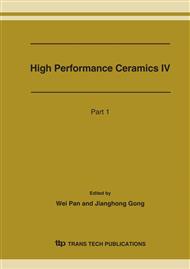p.1904
p.1906
p.1910
p.1914
p.1918
p.1921
p.1924
p.1927
p.1930
Practice of Simulation to Formation of Rock Theory
Abstract:
The utilization of industrial solid wastes as building materials has been thought of as the best way to solve the problems caused by high waste production, high resource consumption and high pollution that is inherent with the primary industries of China. However, due to the low level of usage by previous technologies, these serious problems of the primary industries still persist. Hence, it is urgent to seek an effective way to solve these problems. In this paper, based on the understanding of the theory of simulation to formation of rock and the research advances of sialite technology, it is concluded that sialite technology can achieve the effective usage of industrial solid wastes.
Info:
Periodical:
Pages:
1918-1920
Citation:
Online since:
April 2007
Authors:
Price:
Сopyright:
© 2007 Trans Tech Publications Ltd. All Rights Reserved
Share:
Citation:


